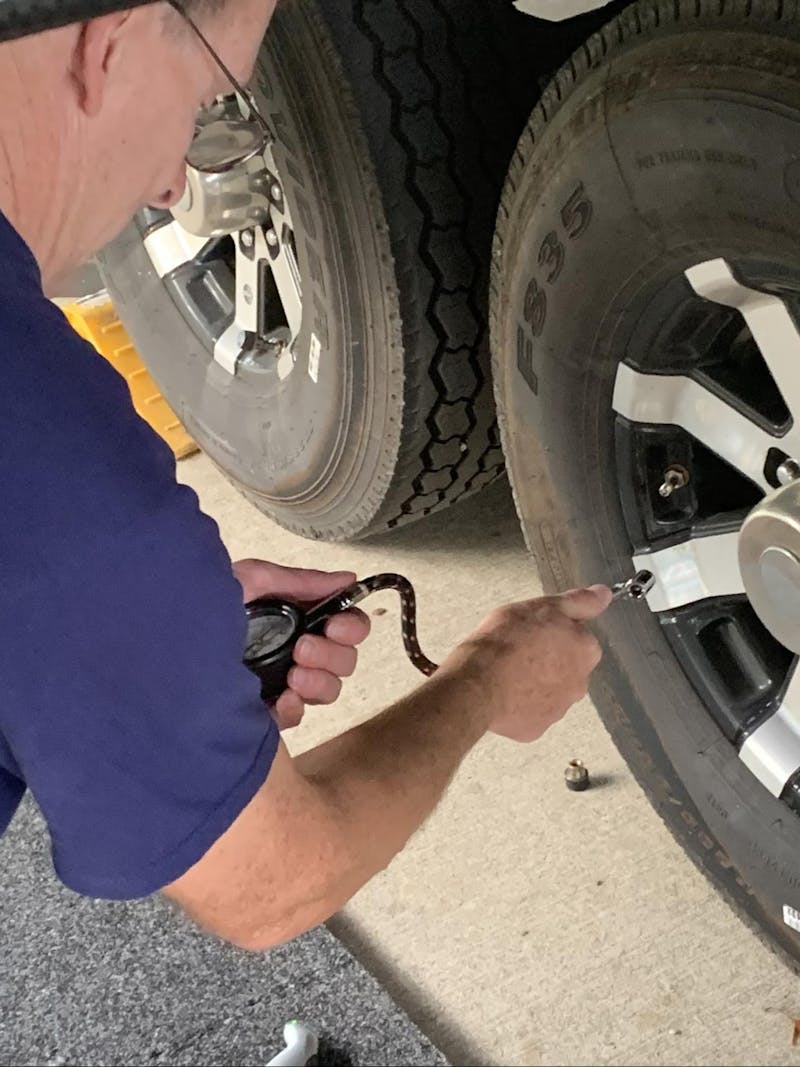First off, do a full systems check.
When you bought your RV, the seller should have demonstrated how every system is operated or used in your particular model. So for every journey you take, do a full systems check before you hit the road. This will help you become more familiar with your rig and help prevent possible problems because you’ll have a frame of reference for how everything should work when it’s working well.
Make sure your rig's fuel tanks are filled and working.
In the course of your systems check, ensure that your tanks are filled with the appropriate fuel and that any appliances or elements that run on that fuel are working. For instance, if your kitchen appliances run on gas, top off the propane and make sure the appliances are connected and running correctly. You don’t want to be on a cold weather trip and find out your heater doesn't work or you can’t cook on the stove.
Don’t forget to check the generator.
The next step in your full systems check is to test your generator if you have one. Make sure it starts up easily and that its capacity can carry the load. Failure to do so could mean you might not have the ability to recharge your RV’s batteries or run any systems that require AC power. Your RV batteries run all the 12-volt DC-powered items, like the lights, vent fans, slide and leveling systems. They also provide power to the water heater and refrigerator ignitors when running on propane. If your RV has the standard deep-cycle lead-acid batteries, you should check the electrolyte level in your batteries, too.
Now that you are confident your RV’s systems are good to go, there are a few more items you need to check before you hit the road.
Always, always, always check your tires.
Check the pressure in all your tires and visually inspect each one for signs of abnormal wear or damage before you leave for a trip. Every time. Tire failures are a common problem faced by RVers––maybe the most common, because more tires equals a greater chance something can go wrong. These failures can be caused by things like the age of your tires, overloading your RV with excess weight, under-inflation, over-inflation and damage from road hazards.
Make sure you check the tire pressure “cold,” meaning before you’ve driven them, and when they haven’t been sitting outside in the sun for several hours. Your tires should be inflated to the pressures listed on the tire sidewall unless specifically instructed differently in your RV’s owner’s manual. Due to the size and weight of RVs, the damage can potentially be severe––so look for every opportunity to check your tires and avoid any preventable accidents.
Check your lug nuts.
Next, while you’re giving attention to the tires anyway, check the lug nuts on your camper’s wheels. You want to ensure none of them are loose, and if they are, tighten them up. Check your owner’s manual about the correct torque to use on lug nuts, then use a torque wrench and the proper-sized socket to give them a twist.
Look for anything unusual.
Sometimes, abnormal wear or damage on a tire can point to a system failure elsewhere. For example, earlier this year, we did a walk around and noticed a tire was wearing out oddly. It turned out a bushing in the suspension had gone bad, resulting in an unusual wear pattern on the tire. We should’ve been looking at our suspension springs and hangers more frequently, but because we were attuned to our tires and normal wear and tear, it alerted us to the fact that something was wrong. However, finding that suspension issue earlier would have saved us the cost of replacing the tire.















